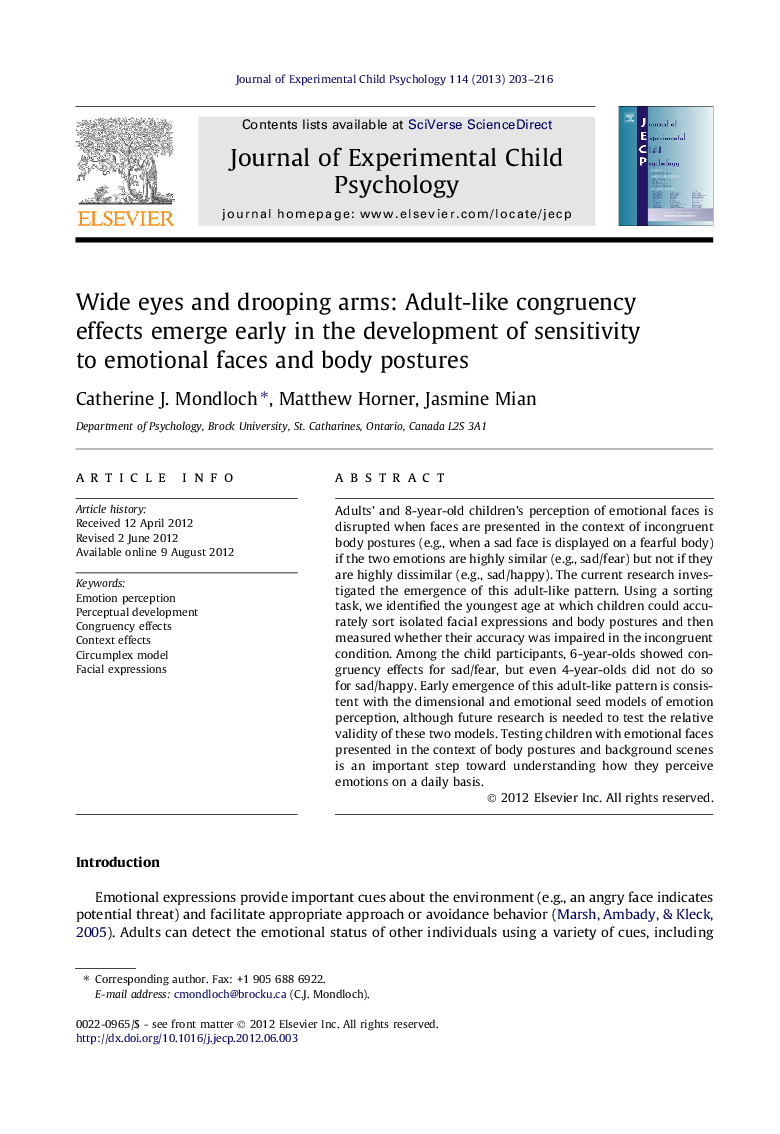| کد مقاله | کد نشریه | سال انتشار | مقاله انگلیسی | نسخه تمام متن |
|---|---|---|---|---|
| 918304 | 919471 | 2013 | 14 صفحه PDF | دانلود رایگان |

Adults’ and 8-year-old children’s perception of emotional faces is disrupted when faces are presented in the context of incongruent body postures (e.g., when a sad face is displayed on a fearful body) if the two emotions are highly similar (e.g., sad/fear) but not if they are highly dissimilar (e.g., sad/happy). The current research investigated the emergence of this adult-like pattern. Using a sorting task, we identified the youngest age at which children could accurately sort isolated facial expressions and body postures and then measured whether their accuracy was impaired in the incongruent condition. Among the child participants, 6-year-olds showed congruency effects for sad/fear, but even 4-year-olds did not do so for sad/happy. Early emergence of this adult-like pattern is consistent with the dimensional and emotional seed models of emotion perception, although future research is needed to test the relative validity of these two models. Testing children with emotional faces presented in the context of body postures and background scenes is an important step toward understanding how they perceive emotions on a daily basis.
► 4-year-olds (not 3-year-olds) accurately sort isolated sad/happy faces and postures.
► 6-year-olds (not 4-year-olds) accurately sort isolated sad/fear faces and postures.
► 4-year-olds’ sorting of sad/happy faces was not impaired by incongruent postures.
► 6-year-olds’ sorting of sad/fear faces was impaired by incongruent postures.
► Adult-like congruency effects emerge just as children recognize emotion in both cues.
Journal: Journal of Experimental Child Psychology - Volume 114, Issue 2, February 2013, Pages 203–216